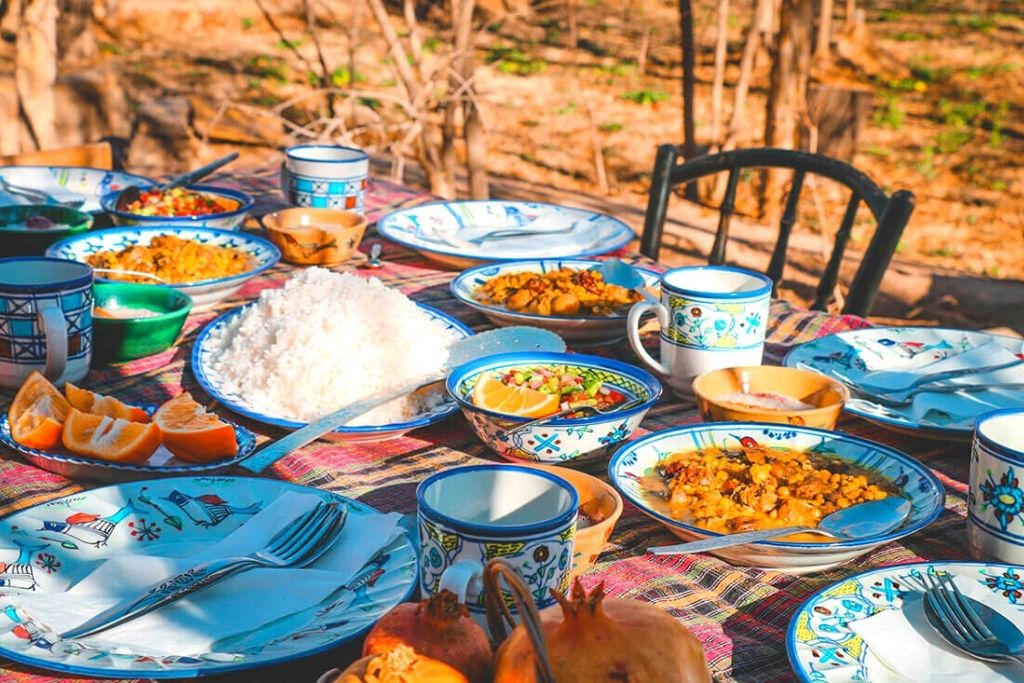Far beyond centuries, Persian foods and culture have been known because of its great impact on the history of human kind,
not every rational person trying to ignore that
but we are not here to praise something
we are here to tell the truth.
Persian foods besides other factors like history, untouched and diverted nature, Persian hospitality and the people’s warm manner play a vital role to attract foreign tourists to the country
And it is, for sure, a great motivation for domestic passengers to move across the country.
10 things you may not know about Iran
In the first place, Persian cuisine assumed as a part of history of agriculture and stock breeding on the Iranian plateau
So that there is a great relation between the cooking and the local productions of a particular area.
Moreover, Iran is a vast country with a noticeable variation of climate which has a remarkable impact on the people’s lifestyle and cuisine, so that we decided to introduce the best of persian food that you can find in every corner of the country.
What are the most popular Persian foods among Iranian?
Here, we are going to explain more about some of the best Persian food based on the level of interest of tourists from other countries.
As you know meat is a crucial part of Persian cuisine but, don’t worry, here you can also find other choices for vegetarians or vegans
Kabab Koobideh (Minced meat Kabāb)
Ingredients: lamb meat, onion, salt, sumac.
Served with: plain rice (Persian Polow), bread, grilled tomato, fresh vegetables, pickle, Burani, souse and Zeitoon-Parvardeh (Persian Olive marinated with Pomegranate & Walnut).
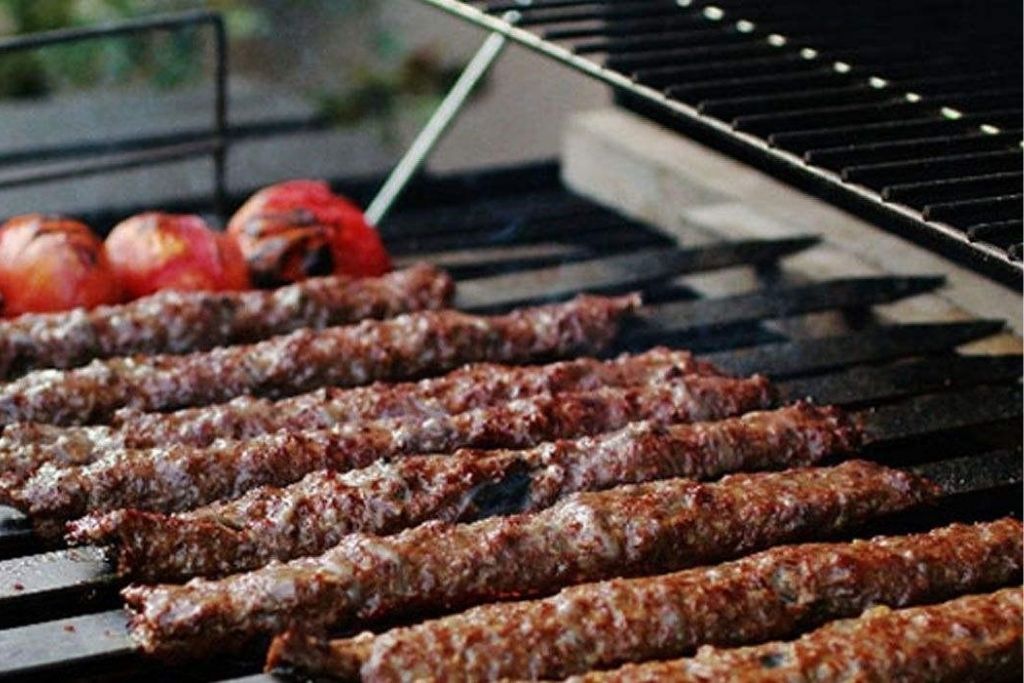


You may be wondering how important Kabāb koobideh for a Persian cuisine style is?
This is exactly why this food must be you first option through visiting the country.
The word Koobideh or kūbide means slamming which refers to the process of meat preparation.
It is actually made from ground lamb or beef mixed with chopped union and spices
Here, there is good article about Kebab Kubideh on wikipedia
Since making this Iranian food requires special skills, only skilled chefs can do it.
As a result, it is known as a food for parties or restaurants, the one that stole our hearts at first bite.
Jooje Kabāb (Persian Saffron Chicken Kebab
Ingredients: chicken, onion, saffron, yogurt, butter, olive oil
Served with: rice, bread, raw onion, Yogurt, Pickles, Burani, grilled vegetables, Zeitoon-Parvardeh, Shirazi Salad, grilled tomatoes, vegetables, yogurt, and olive pickle.
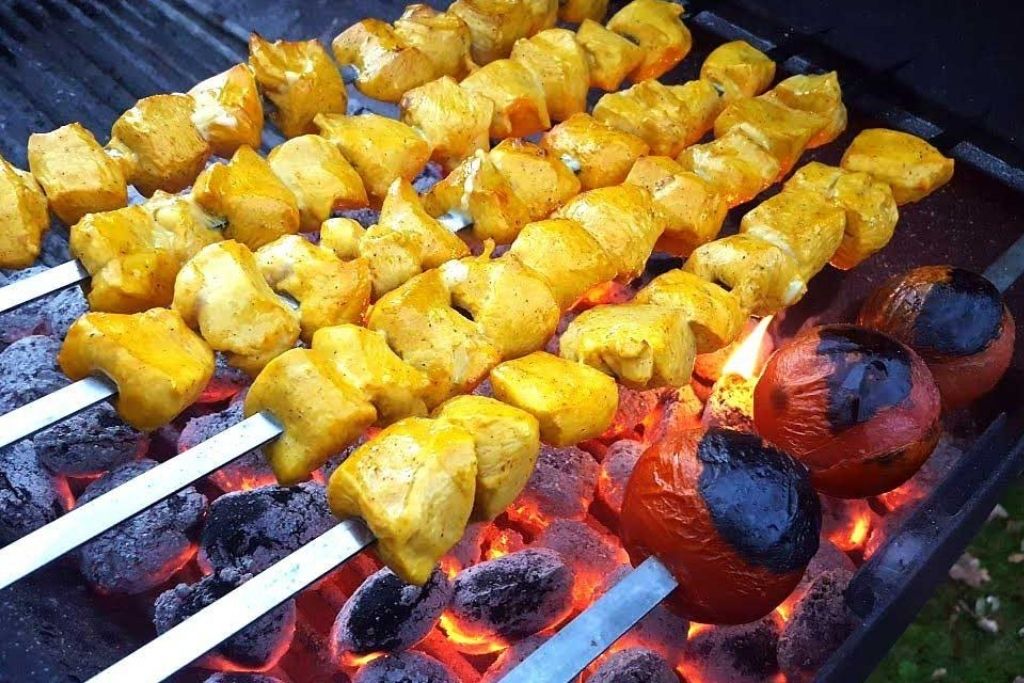


Iranian kebabs are ranked first in the world in terms of meat diversity. Jooje Kabāb, as its name suggests, is made with white chicken.
In fact, young chicken in Iran is called Jooje, which has softer meat than chicken, so its kebab is more favorable.
To cook it, the chickens are divided into small pieces and then kept in a material consisting of lemon juice, saffron, onion, bell pepper, spices, yogurt, etc.
for a few hours until the meat is completely marinated.
You can marinate the chicken pieces anywhere between three to twelve hours.
The longer they marinate, the tenderer and juicy they will be.
It is then skewered and lightly grilled over a charcoal fire, or in the oven. Kebab chicken is usually served with rice or fresh Iranian lavash bread.
Abgoosht (Lamb Chickpea Soup/ broth)
Ingredients: meat, beans, tomatoes, potatoes, onion, garlic, tomato paste, turmeric, salt, pepper
Served with: bread, fresh herbs, vegetables, raw onions, lemon juice
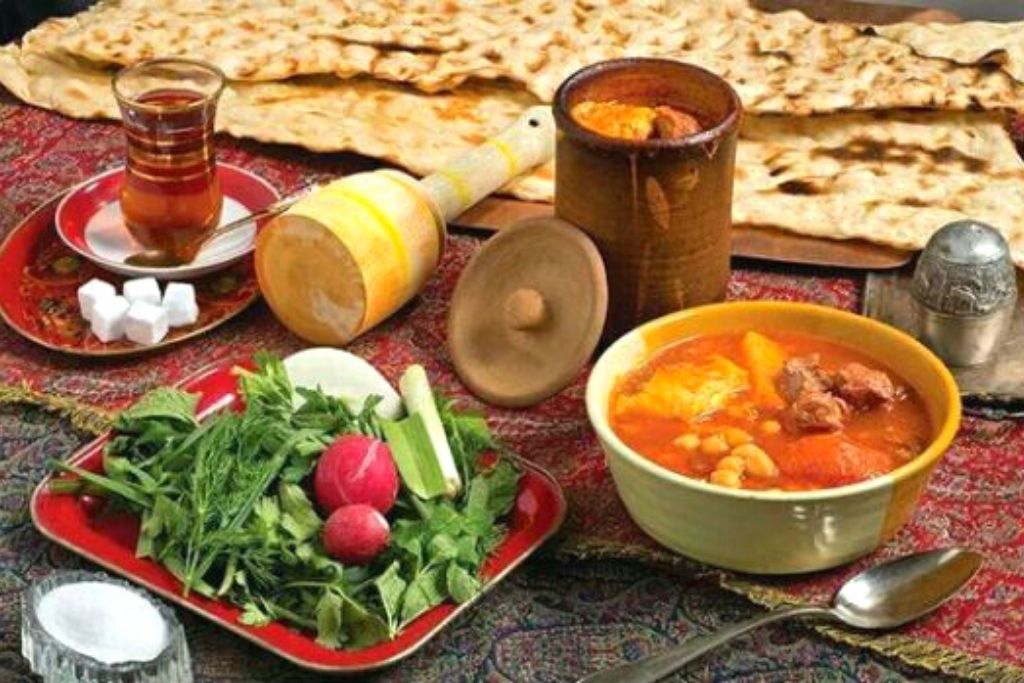


Abgoosht seems to be the best Persian food to represent the Iranian style of cooking and dining.
This is exactly the reason why this food is traditionally very important for Iranians.
You can find it all over the country, in luxury restaurants to traditional cafes.
Abgoosht is cooked in different styles but the most common one is Dizi Sangi which refers to the way the ingredient such as meat beans, potatoes, tomatoes and onion cooked in stone pots.
Fesenjān stew (Khoresht-e Fesenjān)
Ingredients: red meat / chicken, ground walnuts, pomegranate molasses, onion, spices
Served with: rice, bread, raw onion, Yogurt, Burani, Pickles, Zeitoon-Parvardeh, Shirazi Salad
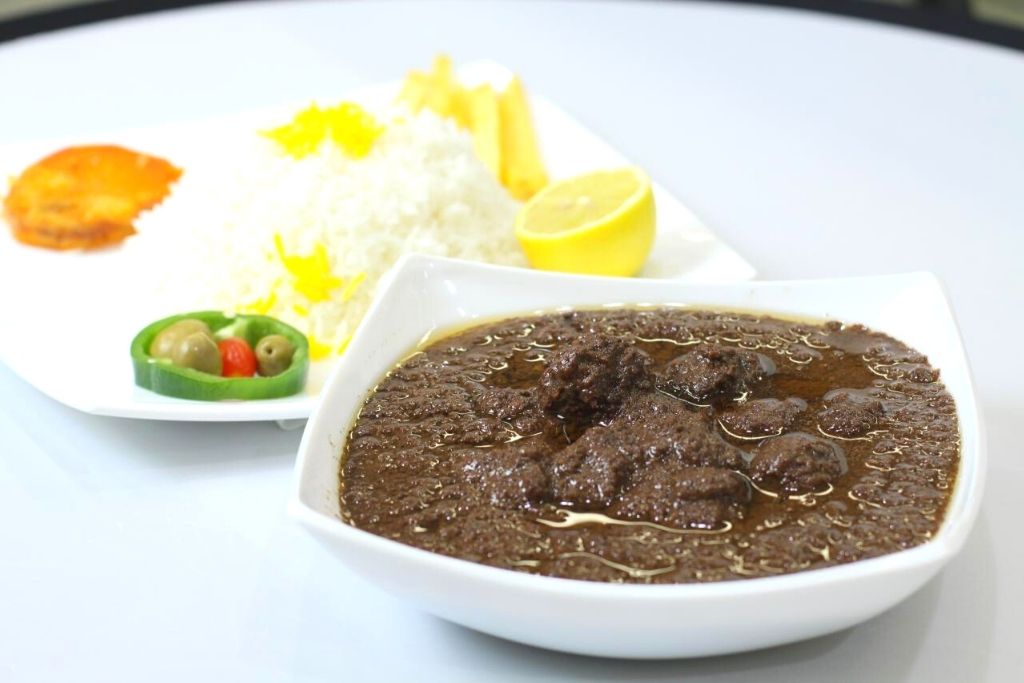


Fesenjān is a very popular part of Iranian food that depending on the geographical region the method of cooking slightly differs.
For example, in the north of Iran, Fesenjān is made with chicken, but in the central regions of Iran made with red meat or meatballs.
In some places it is served sour but in some places sweet or smooth. However, its ingredients stay almost the same.
Fesenjān is an almost expensive Iranian food made for parties and special occasions and is usually served with Iranian saffron rice, especially rice produced in northern Iran.
In some traditional way Iranian Fesenjān, it is eaten with sour dough, pomegranate molasses or pickles.
If you go to a restaurant, before ordering this food, make sure that Fesenjān is made in the usual or northern way, so that you will which one is close to your favorite taste.
ELISE BAUER wrote Persian Pomegranate Chicken (Fesenjan)
visit it for more info
Ghorme Sabzi (Iranian herb stew) – best Persian foods
Ingredients: vegetables (leeks, coriander, fenugreek, spinach), pinto beans, lamb meat, onions, dried lime, tomato paste and spices
Served with: rice, bread, fresh vegetables, Zeitoon-Parvardeh, pickle, Burani, fresh dough and yogurt
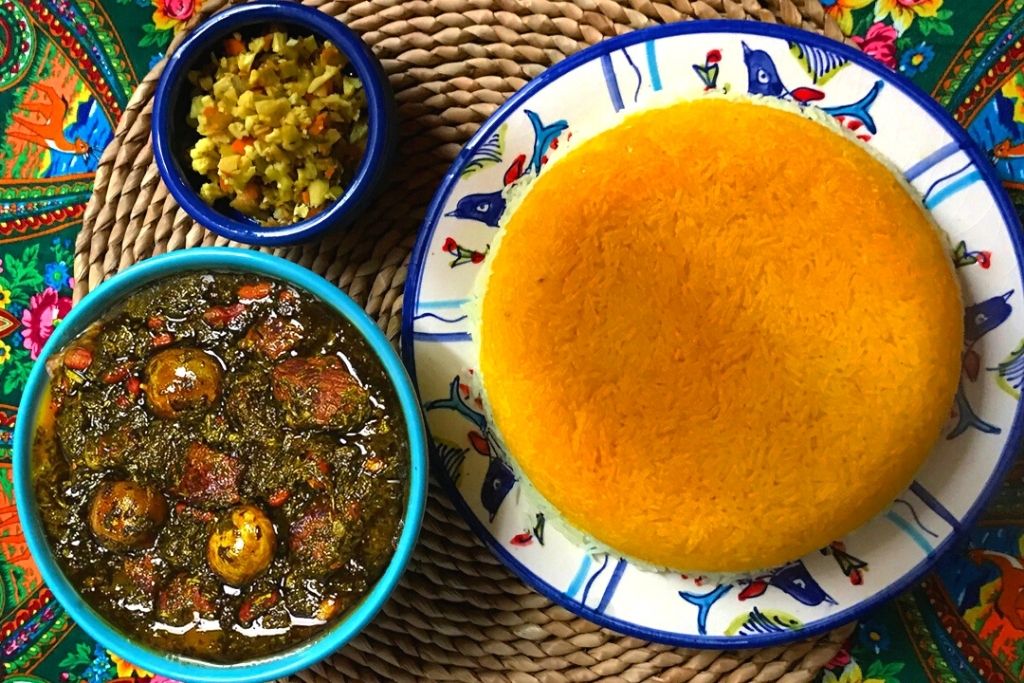


Ghorme Sabzi or herb stew is undoubtedly the most popular Iranian food, the smell of which refreshes the souls of passers-by in every alleys.
The dish which plays an important role in Persian cuisine what is actually the reason for choosing a professional chef.
If you want to know the quality of a good Iranian restaurant, be sure to ask other customers about its Ghorme Sabzi.
It may be hard to believe, but Ghorme Sabzi has a popular place in the Iranian food basket and is common either ceremonies, joy or celebrations, or for everyday food.
Iranians have a tradition of dining their guests with a variety of dishes, an item is certainly Ghorme Sabzi.
In some good restaurants in Iran, cooking this food takes more than 12 hours. you can see full recipe of Ghormeh Sabzi (Persian Herb Stew)
Khoresht-e Gheyme (Yellow Split Peas Stew) | best Persian foods
Ingredients: red meat, split pea, onion, dried lime, tomato paste, spices
Served with: rice, bread, fresh vegetables, pickle, Borani, fresh dough, yogurt, Zeitoon-Parvardeh
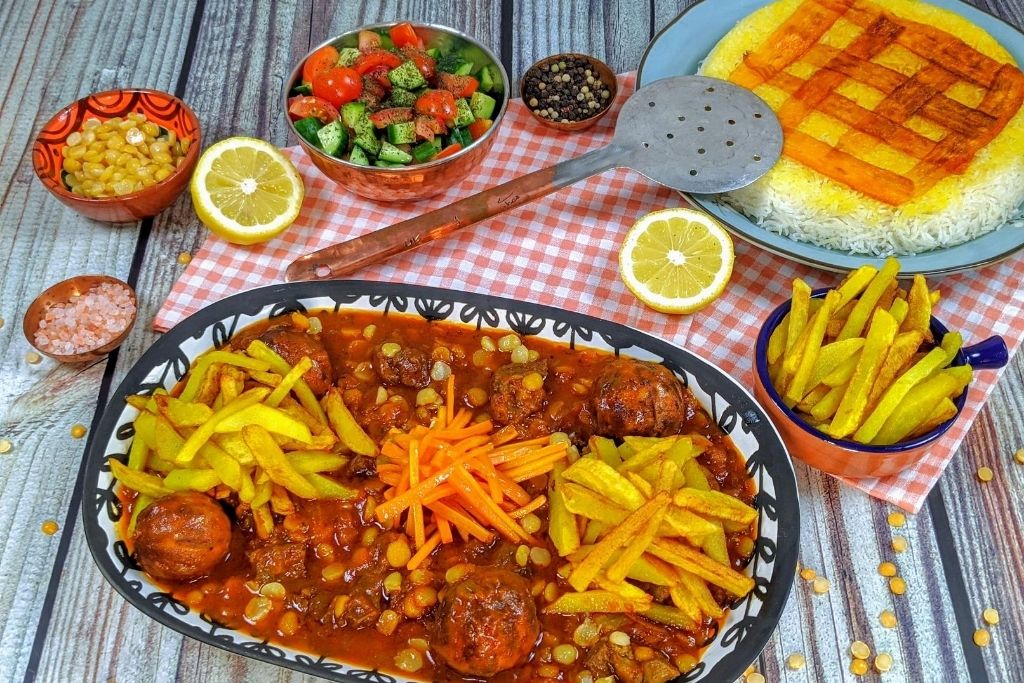


Khoresht-e Gheyme is another popular item of Persian cuisine that is used both for parties and as a daily meal.
Gheyme stew is cooked in different ways, but its main ingredient is meat, split pea, potatoes in a sauce of tomato paste and broth.
But in Yazd, instead of split pea, they usually use a kind of chickpea that is easier to digest.
All about hotel and plane tickets cancellation
In addition, Yazdi stuff has its own fans among foreign tourists. Khoresht-e Gheyme, as one of the characteristics of traditional Persian food, is usually eaten with rice.
Sabzi Polo with Māhi (Fresh herbs with rice and fried fish)
Ingredients: plain rice, fried fish (Caspian kutum or Rutilus kutum or Caspian white fish), fresh herbs, saffron, pistachio, almond
Served with: pickle, garlic pickle, Shirazi Salad, fresh vegetables, pickle, Burani, fresh dough, yogurt, Zeitoon-Parvardeh
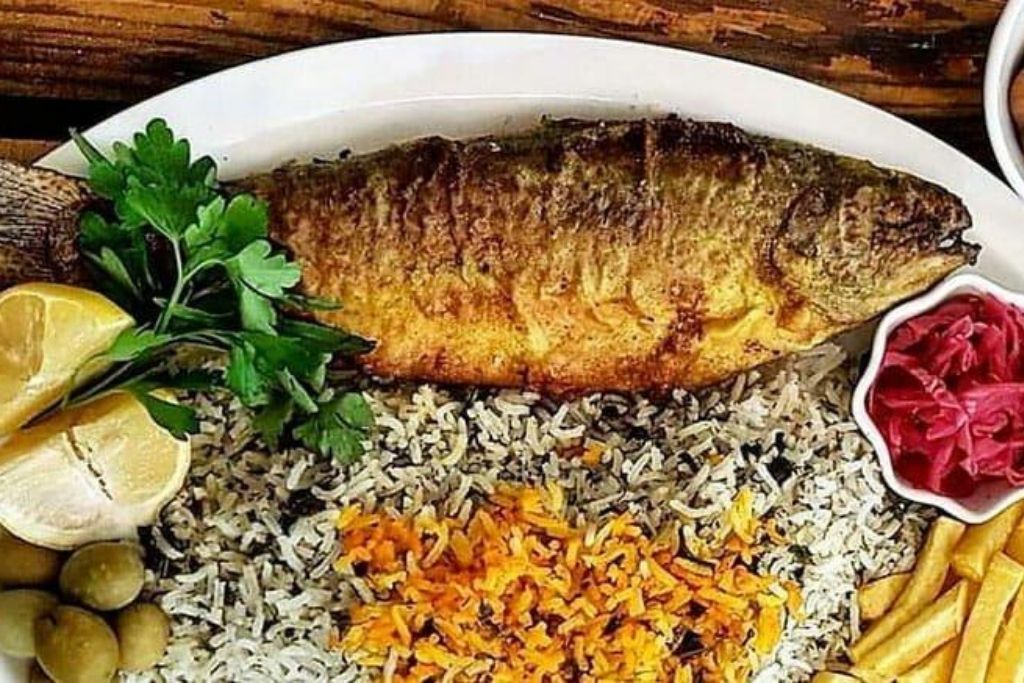


Iran is a country that has access to the open seas, so we expect to bring an example of Persian seafood.
Fishes are the most popular sea products in Iran so we are going to tell you about Sabzi Polow Māhi which has the most common recipe in all over the country.
This delicious food, in addition to having its own fans throughout the year, is also a popular Persian food food that is cooked on New Year’s Eve (Nowruz).
Moreover, you can find it also in most of the Iranian restaurants.
Sabzi Polow Māhi has two item fried fish (usually Caspian kutum or Rutilus kutum or Caspian white fish) and plain rice with herbs.
Persian food for vegetarians and vegans
As mentioned in the introduction, a large part of Iranian food depends on local products, so animal products are an important part of Persian food ingredients.
Normally if you just traveled to Iran and want to dine in a regular restaurant, you don’t need to be lucky to find a proper vegetarian dish there because, there are a variety of vegetarian meal among Iranian dishes.
In this section, we have tried to introduce two types of Persian food if you are vegetarian and the next items seems to be good options for vegans.
Kashk-E-Bademjan (Eggplant dip)
Ingredients: eggplant, dip (a Persian yogurt derivative), mint, onion, walnut, garlic
Served with: bread, fresh vegetables and a mixture of fried onion and mint
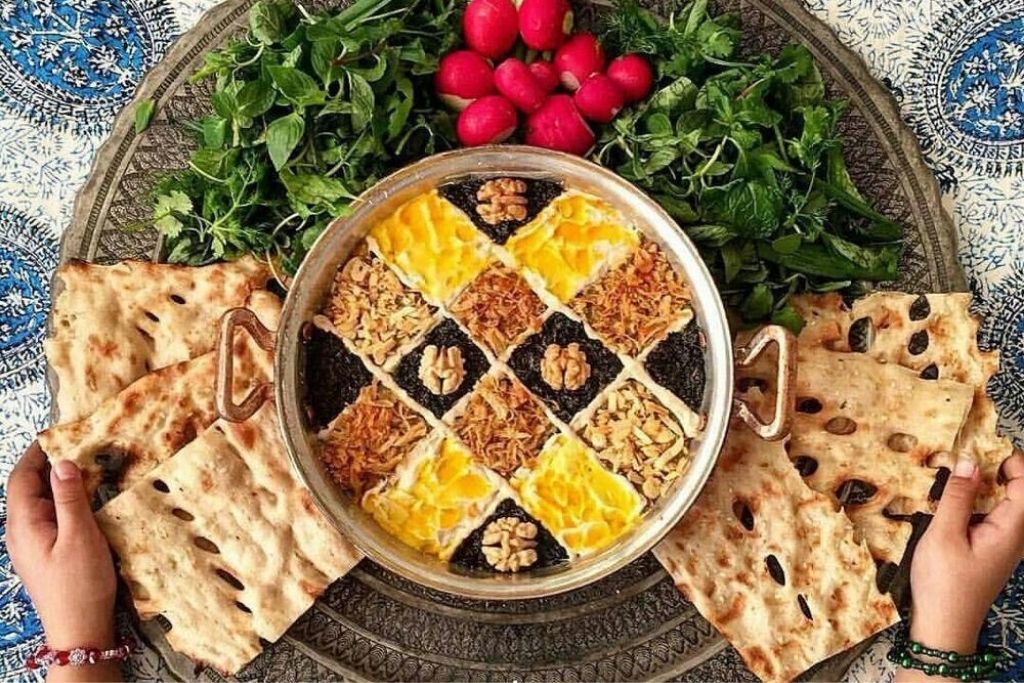


Dip in Persian called Kashk which is one of the most favourable diaries in Persian cuisine.
Eggplant dip or Kashk-E-Bademjan is a traditional Persian vegetarian dish without meat.
So make sure, it’s quite different from similar food which called Halim Bademjan because the second one always come with meat.
To make Kashk-e Bademjan you need to mix puree eggplant with dip, roasted walnut, fried onion, fried mint, garlic and your favorite spices to together.
Mirza-Ghasemi (Smoked Eggplant) | best Persian foods
Ingredient: eggplant, tomato, egg, garlic, spice, salt, pepper
Served with: flatbread, rice, fresh dough, yogurt
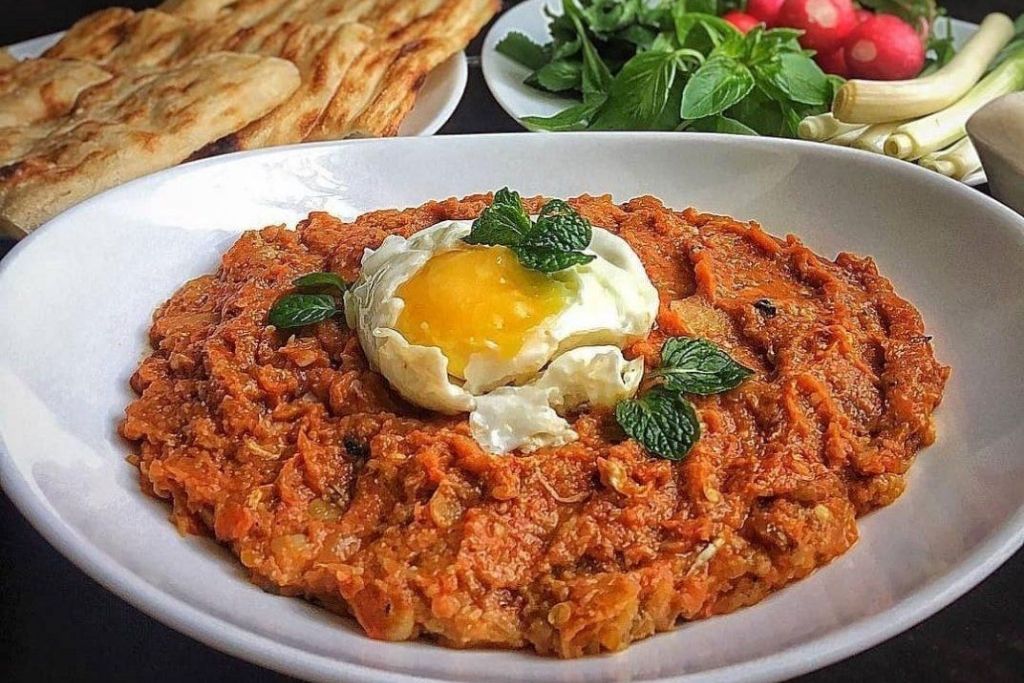


Mirza-Ghasemi is another Persian vegetarian dish originally from the north of Iran.
Local chefs for an smokey flavor eggplants and tomatoes grilled them on charcoal, they will be peeled and mixed with egg and lots of garlic on the stove.
It is also common to crack some fresh eggs on top of the mixture to have one layer of eggs and another Mirza-Ghasemi layer at the bottom.
Ash-e Reshte (vegetable soup)
Ingredients: fresh herbs (Parsley, Cilantro, Mint Leaves, Spinach), beans, peas, noodle, lentil, onion, Wheat flour, thin noodles
Served with: fried garlic, onion, Vinegar, dip
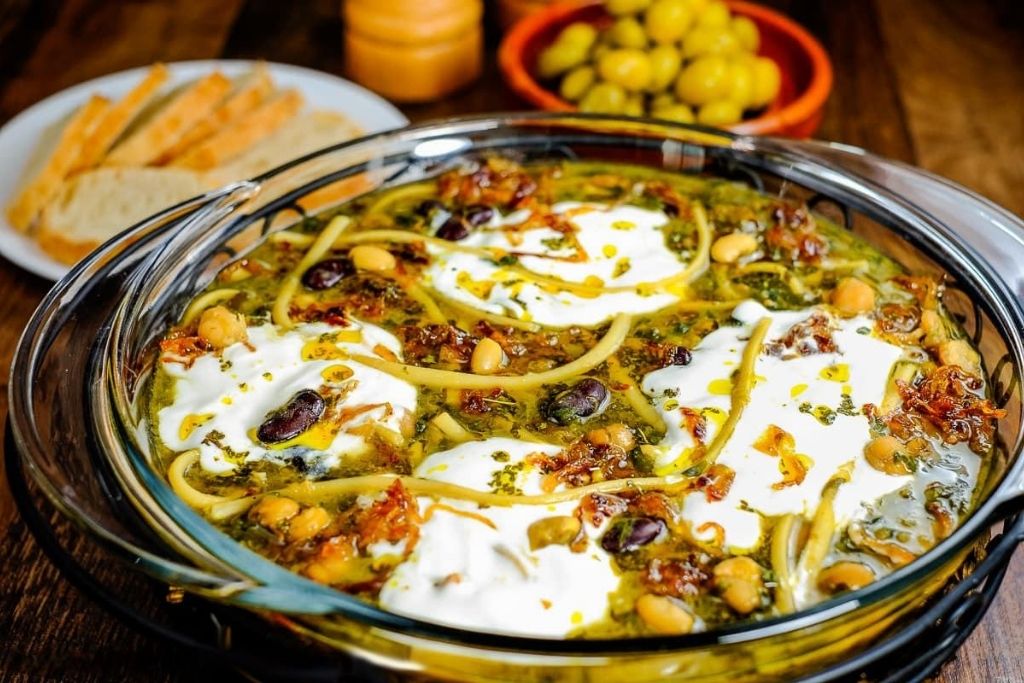


It is interesting to know, there are more than 50 sorts of Ash (thick soup) in Iran but Ash-e Reshte or Iranian green noodle soup which plays an important role in Persian food culture is the most favorite one.
Ash-e Reshte is one of the most well-known and delicious Iranian dishes and Persian foods
.
I do not think there is any Iranian person who does not remember Ash-e Reshte and the family theme parties.
Iranians use this soup for parties, charities, celebrations and daily meals.
It has a high nutritional value due to its colorful and tonic contents, so it is considered a complete meal.
There are many tips for cooking this delicious soup, something that only Persian grandmothers know.
Ash-e Reshte is the best option for vegan and vegetarians in Iran.
However, normally, local people served this delicious food with dip or yogurt but if you are vegan and don’t want use animal product inform your host about it
Kookoo Sabzi (Persian Herb Frittata) | 12 of best Persian foods
Ingredients: fresh herbs, eggs, Barberry, walnut, salt, spice
Served with: bread, yoghurt, fresh dough, vegetables, tomatoes
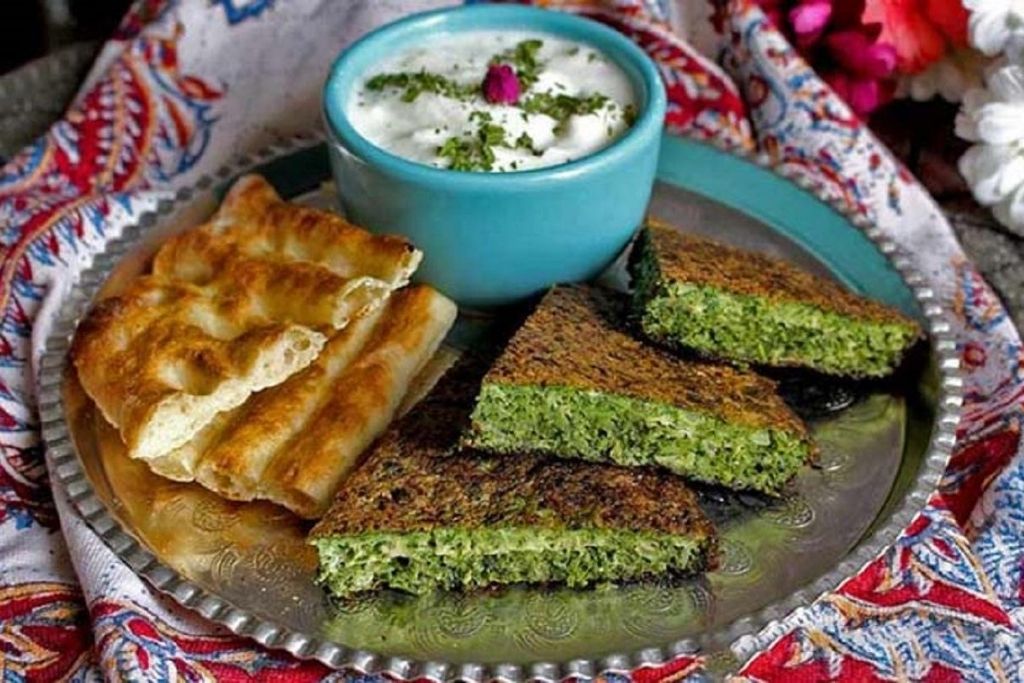


This is the simplest vegetarian Persian food.
Let see how to cook it: in the first stage, break the eggs in a bowl and stir a little.
Then add the vegetables, flour, turmeric, salt, walnuts, barberry and baking powder to the eggs and mix well.
Put the pan on the stove and after heating, pour the oil into it. When the oil is completely hot, pour the mixture into the pan.
You can pour all of it and flatten it with the back of a spoon, or pour it into the pan step by step with a spoon.
Kookoo Sabzi normally served with bread, fresh tomato or garlic.
Dampokhtak (plain rice with other ingredients)
Ingredients: This food is made in different forms but the basic material is plain rice.
Adas polow: lentil, rice, fried onion, fried raisins (sometimes)
Lubia polow: Blue-eyed beans, rice, fried onion, fried raisins (sometimes)
Baghali polow (Persian dill rice): lima beans: rice, potatoes, nuts (sometimes)
Served with: bread, yogurt, fresh dough, vegetables, tomatoes
Estamboli: rice, potatoes, tomatoes, green beans, meat or soy protein (sometimes)
Served with: bread, yogurt, pickle, fresh herbs, vegetables, fried potatoes, Shirazi Salad, Burani, souse and Zeitoon-Parvardeh
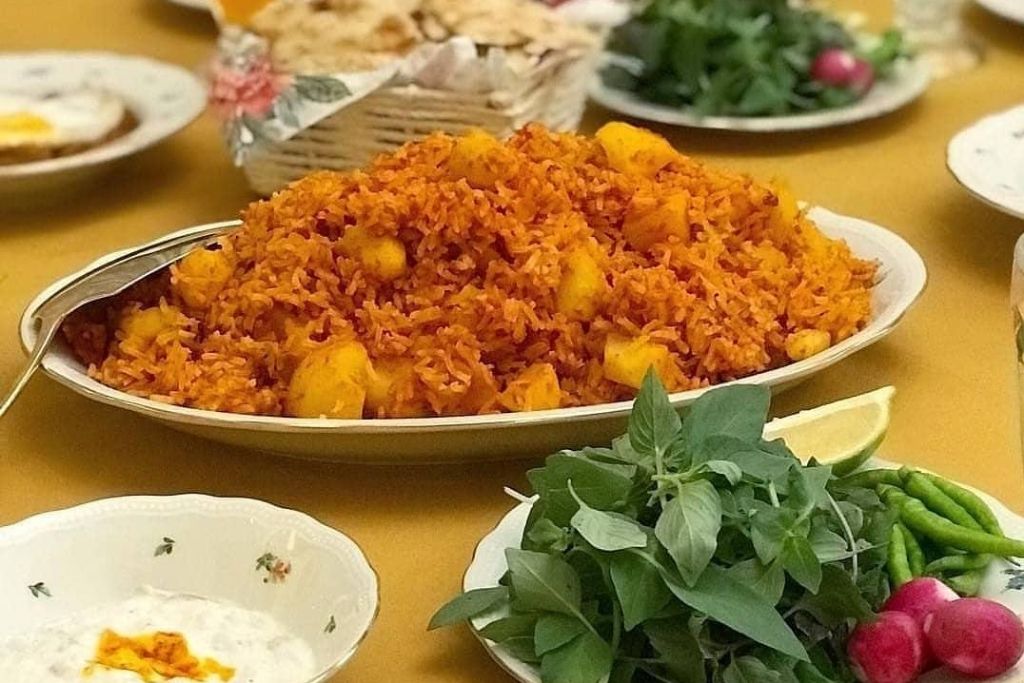


Dampokht (Ak), Damī refers to rice cooked in a single pot consisting of plain rice mixed with other ingredients, like sauteed onions, fava beans, mung beans, and seasonings.
This Iranian food has the most diverse form. In fact, it is called lentil Polow, bean Polow, Baghali Polow, Estamboli (sometimes it has meat), tomato Polow, etc.
In the first example, rice and lentils that have been pre-cooked are mixed and eaten with fried onions or fried raisins.
Bean Polow and Baghali Polow are prepared in the same way. In the case of Estamboli, the obvious difference is that the ingredients include rice and beans, but sometimes fried meat is also used so before eating ask the host to use soy instead of meat.
Dampokht-e Goje, which has the most delicious aroma, is considered one of the simple Iranian home dishes, which is why it has many fans Dampokht-e Goje is a combination of plain rice mixed with tomato puree and fried onion.
![The best travel agency in Iran | Best Persian foods that anyone must try | Iranforall [2020]](https://iranforall.com/wp-content/uploads/2017/05/cropped-LOGO-6.png)
